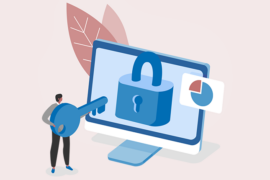Customer acquisition cost (CAC) is one of the most important metrics for any business that wants to grow and succeed. It measures how much money you spend to acquire a new customer, and it can have a huge impact on your profitability and scalability.
But what exactly is CAC, how do you calculate it, and how can you reduce it? In this blog post, we’ll answer these questions and more, so you can optimize your customer acquisition strategy and get the most out of your marketing budget.
What is customer acquisition cost?
The average cost of acquiring a new client is known as the customer acquisition cost. It includes all the costs associated with attracting, nurturing, and converting prospects into customers, such as advertising, content marketing, sales commissions, software tools, etc.
To calculate your CAC, you simply divide your total customer acquisition costs by the number of new customers you acquired in a given period. Your CAC would be $100, for instance, if you spent $10,000 on customer acquisition in a month and added 100 new clients.
Why is customer acquisition cost important?
Customer acquisition cost is important because it tells you how efficient and effective your marketing and sales efforts are. It also helps you evaluate the return on investment (ROI) of your customer acquisition channels and campaigns.
Ideally, you want your CAC to be as low as possible, while still maintaining a high quality of leads and customers. A low CAC means that you are spending less money to acquire more customers, which increases your profit margin and allows you to scale your business faster.
However, a low CAC is not always a good sign. It could also mean that you are underinvesting in customer acquisition, missing out on potential opportunities, or attracting low-value customers who churn quickly or don’t generate enough revenue.
That’s why you need to compare your CAC with other metrics, such as customer lifetime value (CLV), which measures how much revenue a customer generates for your business over their entire relationship with you. A common rule of thumb is that your CLV should be at least three times higher than your CAC, meaning that for every dollar you spend on customer acquisition, you should get back at least three dollars in revenue.
How can you reduce your customer acquisition cost?
Reducing your customer acquisition cost is not an easy task. It requires constant testing, optimization, and analysis of your marketing and sales strategies. However, some general tips can help you lower your CAC and improve your ROI:
Focus on the right target audience.
Not all leads are created equal. Some are more likely to become customers than others, based on their demographics, behaviors, needs, and preferences.
By identifying and segmenting your ideal customer profile (ICP), you can tailor your marketing messages and offers to their specific pain points and goals, increasing your conversion rates and reducing your CAC.
Optimize your website and landing pages.
Your website and landing pages are the first impression that potential customers have of your business. They need to be clear, engaging, and persuasive enough to convince visitors to take action.
To optimize your website and landing pages, you should follow the best practices of web design, copywriting, and user experience (UX), such as using catchy headlines, compelling calls to action (CTAs), social proof, testimonials, etc.
You should also use tools like Google Analytics or Hotjar to track and analyze how visitors interact with your website and landing pages and run A/B tests to find out what works best.
Leverage content marketing and SEO.
Content marketing and SEO are two of the most cost-effective ways to attract organic traffic to your website and generate qualified leads. Content marketing involves creating and distributing valuable, relevant, and consistent content that educates, entertains, or inspires your target audience.
SEO involves optimizing your website and content for search engines like Google or Bing, so they rank higher for keywords related to your business. By combining content marketing and SEO, you can build trust and authority with your audience, increase your brand awareness, and drive more conversions.
Use email marketing and automation.
Email marketing is one of the most powerful tools for nurturing leads and converting them into customers. It allows you to communicate with your prospects on a personal level, send them targeted messages based on their interests and actions, and guide them through the buyer’s journey.
Email marketing also has a high ROI, as it costs very little to send an email compared to other channels. To improve the effectiveness and efficiency of email marketing, you should use automation tools like Intercom or Mailchimp, which allow you to create workflows that trigger emails based on certain criteria or events, such as requesting a trial, obtaining an ebook, or signing up for a newsletter, etc.
Encourage referrals and word-of-mouth.
Referrals and word-of-mouth are one of the best ways to acquire new customers, as they come from trusted sources and have a high conversion rate. A Nielsen survey found that recommendations from friends and family are trusted by 92% of customers more than any other type of promotion.
To encourage referrals and word-of-mouth, you should provide an exceptional customer experience, offer incentives or rewards for referrals, create a referral program, ask for testimonials and reviews, and leverage social media and online communities to spread the word about your business.
How to boost your ROI for the customer acquisition
ROI, or return on investment, is the ratio of the profit or loss you make from your customer acquisition efforts to the amount of money you invest in them. It tells you how much value you get back for every dollar you spend on acquiring new customers.
To boost your ROI for customer acquisition, you need to increase your revenue and decrease your costs. Here are a few strategies to achieve that:
Upsell and cross-sell to your existing customers.
One of the easiest ways to increase your revenue is to sell more to your existing customers, who already know and trust your business. You can upsell them by offering them a higher-tier product or service that provides more value or features, or cross-sell them by offering them a complementary product or service that enhances their experience or solves another problem.
For example, if you sell software, you can upsell them by offering them a premium plan with more storage or functionality, or cross-sell them by offering them an add-on or integration that improves their workflow or productivity.
Increase your customer retention and loyalty.
Another way to increase your revenue is to keep your customers longer and make them more loyal to your business. Customer retention and loyalty are closely related to customer satisfaction and experience, which depend on the quality of your product or service, your customer support, your communication, and your value proposition.
To increase your customer retention and loyalty, you should provide an exceptional customer experience, deliver on your promises, listen to and act on customer feedback, reward loyal customers with discounts or perks, and create a sense of community around your brand.
Optimize your pricing strategy.
Your pricing strategy can have a significant impact on your revenue and profitability. It affects how customers perceive the value of your product or service, how they compare it with your competitors, and how willing they are to pay for it.
To optimize your pricing strategy, you should conduct market research and competitor analysis, understand your target audience and their willingness to pay, test different pricing models and strategies (such as freemium, subscription, tiered, etc.), and monitor and measure the results.
Automate and streamline your processes.
One of the best ways to decrease your costs is to automate and streamline your processes, especially those that are repetitive, time-consuming, or error-prone. Automation and streamlining can help you save time and money, improve efficiency and accuracy, reduce human errors and mistakes, and enhance customer satisfaction and experience.
To automate and streamline your processes, you should use tools like Zapier or IFTTT, which allow you to connect different apps and services and create workflows that trigger actions based on certain criteria or events, such as sending an email when a new lead is created, updating a spreadsheet when a payment is received, etc.
Outsource or delegate non-core tasks.
Another way to decrease your costs is to outsource or delegate non-core tasks that are not essential to your business or that require specialized skills or expertise that you don’t have in-house. Outsourcing or delegating can help you save time and money, focus on your core competencies, and gain access to more talent and resources.
To outsource or delegate non-core tasks, you should use platforms like Upwork or Fiverr, which allow you to find and hire freelancers or agencies for various tasks, such as building websites, content writing, graphic design, etc.
Conclusion
Customer acquisition cost is a key metric that measures how much money you spend to acquire a new customer. It helps you evaluate the efficiency and effectiveness of your marketing and sales efforts, as well as the return on investment of your customer acquisition channels and campaigns.
To calculate your CAC, you simply divide your total customer acquisition costs by the number of new customers you acquired in a given period. To reduce your CAC, you should focus on the right target audience, optimize your website and landing pages, leverage content marketing and SEO, use email marketing and automation, and encourage referrals and word-of-mouth.
By lowering your CAC and increasing your CLV, you can improve your profitability and scalability, and grow your business faster and smarter.





